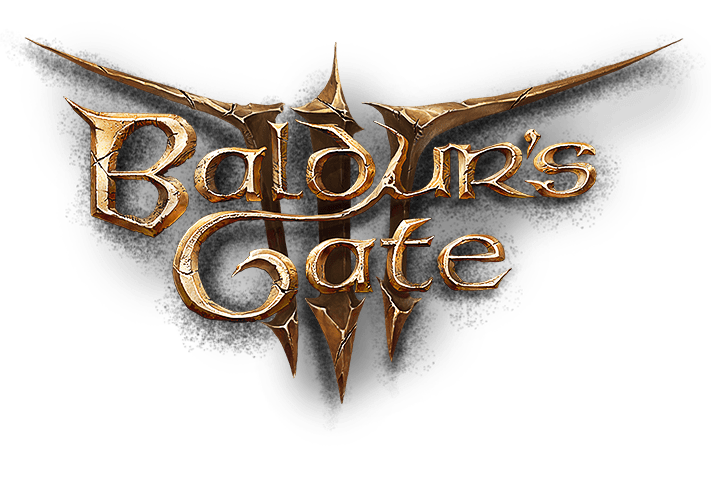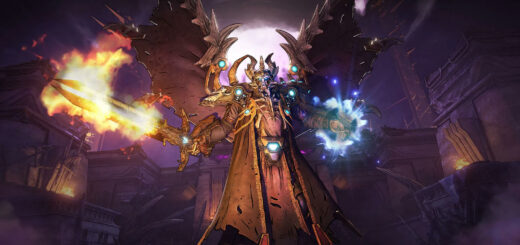Baldur’s Gate III Review
Of Tadpoles and Illithids
In the previous decade, Larian Studios garnered itself a very strong reputation with its Divinity: Original Sin titles. After successfully reviving the feel of classic cRPGs that brought many western RPGamers into the genre, it felt like a natural choice that the developer would be solicited by Wizards of the Coast as partner for a new entry in perhaps its most beloved adaptation of Dungeons & Dungeons to the video game sphere: Baldur’s Gate. Larian Studios has shot for the sky in the creation of Baldur’s Gate III, and regardless of anything else must be celebrated for the achievement of rolling such an ambitious title out of the door after keeping the faith to do it properly.
Built on Dungeons & Dragons 5e and its Forgotten Realms setting, Baldur’s Gate III takes place over a hundred years after the events of Baldur’s Gate II. No knowledge of the past games is necessary to go into Baldur’s Gate III, but it does feature plenty of callbacks and some returning faces, some considerably more noteworthy than others. The game starts with players abducted during a mind flayer raid and implanted with a tadpole, only for the mind flayer ship to come under attack from mortal enemies the Githyanki and end up in the infernal realm of Avernus. The tutorial section introduces the game’s basic mechanics and controls as players look to get the ship and themselves out of danger, leading to it returning to the material plane and crashing somewhere outside of the city of Baldur’s Gate.
Baldur’s Gate III lets players create their own custom character or choose one of the preset origin characters; any unchosen origins become recruitable party members tadpoled alongside the player character, each with their own major stories and potentially playing key roles in the plot as a whole. The most immediate problem for these survivors to solve is that of the tadpole in their head to avoid the agonising process of being turned into a mind flayer themselves. While it turns out the tadpoles are being held back from the usual gestation, the not-quite-ticking time bomb in their heads remains a primary driving force for the plot throughout, even as greater machinations start to appear.
The game does a fascinating job of handling two contrasting play styles: content-complete playthroughs where players will want to see all possible stories or quest lines through to idealised completion, or a more traditional tabletop-style of accepting when choices can lead to sudden outcomes. There is plenty of opportunity and reason for a thread to end in an imperfect manner, or for a potential party member to be killed upon first meeting, but the game is otherwise perfectly happy to allow quicksaves and save scumming as players wish it. It still doesn’t quite have the flexibility of a human GM, but the breadth and depth of choices and number ways for players to overcome the things in their way that Larian Studios has built into the game is truly impressive.
The impacts of these choices upon the world pays off in the game’s writing and performances. All of the main party members are morally dubious characters, initially looking out for themselves, and can readily go in either direction as the campaign progresses. It’s of great credit to the writing staff that both the set up and payoff for the cast works so incredibly well, and it’s backed up superbly by both the voice over and motion-capture performances. It almost feels unfair to the others to try and single out performances, but Neil Newbon as Astarion is a particular standout, while Amelia Tyler’s narration adds a wonderful descriptive layer on top of the game’s visuals representations. Borislav Slavov’s score also provides a great musical unpinning to everything.
The one issue with the game’s story and writing is how the game’s primary antagonists end up lacking the same amount of depth as many of the other characters. Ketheric Thorn is perhaps the most engaging of them, as he is the most actively involved during events and there is something to his past that makes him more ingrained in the events surrounding the main story. It’s admittedly difficult to find a way to create antagonists that work for the shades of grey that make up Baldur’s Gate III’s party. The main antagonists just pale in comparison to certain other characters players interact with, whose motivations and actions, plus any future repercussions from dealing with them, are much harder to predict. Even if its primary foes aren’t as notable, Baldur’s Gate III finds more than enough memorable antagonists of other means to make up the difference and more.
Baldur’s Gate III is split into three acts, each with its own expansive regional map containing a host of interesting encounters, quests, and people. Each act offers its own appreciable flavour in setting and general feel; the first act based around the grove offers a good introduction to the game’s quests and decision making with its own small scale conflict to deal with, before the second act just ramps everything up, and the sprawling final act offers a culmination of everything that’s happened before. There’s a great variety to the quests and their subject matter, from fun dealing with the tiefling children in the grove to the character-defining trials that some of the party members are required to go through, and many feature multiple ways and degrees to solving them.
As a whole, exploring the game’s locations is thoroughly engaging, and there are lots of little secrets to find, some of which can depend on character skills and rolls working in the player’s favour. Nonetheless there is some awkwardness within certain quests, particularly when trying to act stealthily. The implementation of its stealth and associated mechanics often makes it a pain to conduct any subterfuge-based actions, and players will usually need to switch into turn-based mode pull off anything that requires coordination. However, these issues never take any of the gloss off the game, and it remains immensely fun and highly satisfying to progress through its vast quest offerings. The implementation of skill checks and their dice rolls is often pleasing; it’s great to see the rolls and it succeeds in emulating the sense of joy at beating a difficult check, particularly as players apply their appropriate modifiers to the physical roll.
While the original Baldur’s Gate titles utilised real-time-with-pause, Larian Studios keeps faith with fully turn-based combat for Baldur’s Gate III and a close adaptation of the D&D 5e rules, which by and large works in its favour. The system offers lots of scope for strategic use of skills, the environment, character positioning, and more. It’s not immune from some common foibles of turn-based tactical systems — for example, waiting for enemy turns in busy battles — but everything works very well. The amount of skills, spells, and classes available ensures that players can find many different ways of setting up their party and using it in battle.
Baldur’s Gate III makes controlling the battlefield a key tactic and there’s good variety in the enemies encountered that encourages players to experiment with some abilities they might not necessarily be drawn to. It’s definitely important to maintain a balanced party, but there are plenty of different ways to do that. The controls on PC allow players to switch seamlessly between traditional keyboard and mouse and gamepad. Some things, such as inventory management and scrolling through available skills and actions, are by their very nature not quite as smooth on gamepad, but Baldur’s Gate III’s implementation — utilising radial menus — is absolutely the best so far for games of its type and very encouraging for console players. Meanwhile, the game offers decent flexiblity with its difficulty options (even moreso with the release of a Custom setting) as well, working hand-in-hand with its approach to welcome those differing campaign play styles.
Character development is taken right out of the D&D 5e playbook. After obtaining a certain amount of experience, characters can level up, with different levels granting access to new feats, spells, skills, etc. All of the party members are given experience, even if not recruited yet, so players can primarily use their preferred party and easily swap in others as desired, such as for quests with close associations with their personal story lines. The number of options for skills and spells can make it a bit tricky to figure out which ones are going to be useful, though the game offers auto-selections to help out. Characters can reach a level cap of 12, which offers enough satisfying growth to let players touch on some of D&D’s more impressive abilities, without getting into potential power-breaking territory.
The visuals of Baldur’s Gate III definitely follow a similar aesthetic to Divinity: Original Sin. They are perhaps more vibrant than D&D fans, particularly of the previous Baldur’s Gate titles, are expecting but the vibrancy definitely helps give the game character. The game did launch with some technical issues, including some bugs that have steadily been quashed in updates since, though most notably are performance issues in the very busy final act. However, Larian Studios has been steadily plugging at these. Otherwise the performance is very impressive and, despite clearly pushing the system, it performs surprisingly smoothly on Steam Deck. The cinematic direction is very strong throughout, aided by the aforementioned motion capture performances, and the character designs fit perfectly within its world.
Baldur’s Gate III is a title that many would not have thought possible just a few years ago. The game serves to further Larian Studios’s already strong reputation, and the studio deserves massive credit for refusing to panic, taking its time to get things right, and continuing to offer improvements even after launch at an impressive rate. Hopefully, it is able to reap the richly deserved rewards for doing so.
Disclosure: This review is based on a free copy of the game provided by the publisher.


Superb performances from the cast
Excellent variety in quests and outcomes
Caters incredibly well to different gameplay styles
Strong implementation of D&D systems
Some technical hiccups (though significant improvements made post-launch)
Main antagonists lack impact compared to other characters










Recent Comments